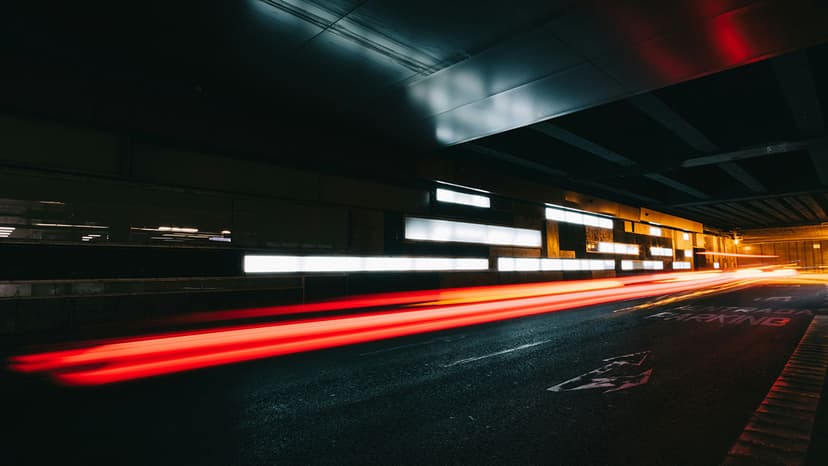Exploring Tesla's Full Self-Driving Technology
Imagine cruising down a highway in a car that drives itself while you sit back and relax, maybe catch up on some reading, or have a chat with friends. This vision of the future is closer to reality thanks to innovations like Tesla's Full Self-Driving (FSD) system. But what makes Tesla's system tick? Let's take a journey into the world of autonomous driving technologies and uncover the magic behind Tesla's FSD.
What is Tesla's Full Self-Driving System?
Tesla's Full Self-Driving (FSD) capability is an advanced driver-assistance system (ADAS) designed to perform a wide variety of driving tasks. This technology allows the vehicle to navigate highways, change lanes, come to a complete stop at traffic lights, and take active routes through city streets. It's important to note that while it's called "Full Self-Driving," Tesla still categorizes it as a Level 2 system on the SAE scale of autonomy, meaning it requires the driver's attention and must be supervised at all times.
The Magic Behind the Tech
Cameras, Sensors, and Neural Networks
At the heart of Tesla's Full Self-Driving (FSD) technology is a sophisticated blend of cutting-edge hardware and advanced software. The centerpiece of this system is the "Full Self-Driving Computer," also referred to as "Hardware 3." This robust onboard computer is designed to process vast amounts of data at lightning speeds. It runs Tesla’s proprietary neural networks, which are tailored specifically to handle the complexities of autonomous driving.
Tesla's FSD system primarily employs a vision-based strategy for navigation and decision-making. The system integrates eight surround cameras providing 360-degree visibility around the vehicle up to 250 meters away. This extensive visual coverage is crucial for detecting and reacting to other vehicles, pedestrians, traffic signs, and various other objects.
In addition to the cameras, Tesla vehicles are equipped with a suite of ultrasonic sensors and a forward-facing radar. The ultrasonic sensors play a pivotal role in detecting close-range objects around the vehicle, which is particularly useful for parking maneuvers and low-speed traffic. The radar adds another layer of detection capability, particularly effective in harsh weather conditions where cameras might struggle, such as fog or heavy rain.
Tesla’s approach deviates from many traditional autonomous systems that rely heavily on LiDAR (Light Detection and Ranging) or require highly detailed pre-mapped environments. Instead, Tesla's FSD system processes data in real-time, allowing the vehicle to understand and react to new and unpredictable driving scenarios as they occur. This real-time data processing is critical for navigating complex road situations and adjusting to sudden changes in the driving environment.
The Role of Data and Learning
The ability of Tesla's FSD technology to make informed driving decisions is heavily reliant on a continuous learning loop powered by machine learning. Each Tesla equipped with FSD capabilities serves not just as a vehicle but as a data collector. As drivers use their vehicles, data about their journeys is anonymized and sent back to Tesla. This massive pool of real-world driving data is invaluable for training the system’s neural networks.
This training involves analyzing the data to learn patterns and improve decision-making processes. For instance, by understanding thousands of instances where vehicles successfully navigate through roundabouts or make complex lane changes, the FSD system can enhance its algorithms to perform these tasks with greater accuracy and safety. Over time, as more data is collected and analyzed, the system’s ability to handle a wider variety of driving scenarios improves, effectively enabling it to learn from the collective experience of Tesla drivers worldwide.
Furthermore, Tesla continuously updates the FSD software via over-the-air updates. These updates may contain improved neural network models, enhanced image recognition capabilities, and refined driving algorithms, all of which contribute to the gradual improvement of FSD performance. This model of continuous improvement not only helps in refining the existing capabilities but also in integrating new features that make autonomous driving safer and more reliable.
The Importance of Connectivity
Tesla cars are not just vehicles; they're also connected devices. They receive regular over-the-air software updates that not only add new features but also refine existing capabilities. This way, the FSD system evolves, improving in response to the collected masses of real-world driving data.
Safety First
Safety is paramount when it comes to autonomous driving technologies. Tesla's FSD includes features like Autopilot, designed to reduce the driver's workload. It can steer, accelerate, and brake automatically within its lane. Advanced safety features like automatic emergency braking, collision warning, and blind-spot monitoring work in tandem with FSD to enhance safety.
While Tesla's technology is groundbreaking, it's worth mentioning that drivers must remain alert and keep their hands on the wheel, prepared to take control at any moment. The system is designed to assist rather than replace a human driver.
Tesla's aggressive push towards fully autonomous driving raises both excitement and ethical questions. The technology offers the potential to decrease accidents caused by human error and transform the transportation landscape dramatically. It also poses questions about the impact on driver employment and the ethical decisions made by machines.
Despite these challenges, the future of Tesla's autonomous driving looks promising. Continuous improvements and updates may soon deliver on the promise of a car that can handle all aspects of driving, taking us closer to that vision of a truly self-driving vehicle.












